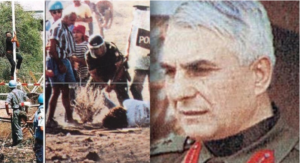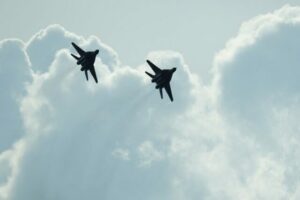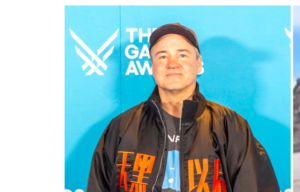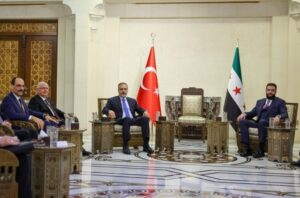Retired lieutenant general of the occupying army Hasan Koudaktsi, the man who confessed to having ordered the brutal killing of Solomos Solomou at the Deryneia roadblock on August 14, 1996, died in a private hospital of the occupied.
As reported by Turkish Cypriot media and reproduced by Alpha News Cyprus, the 86-year-old former head of the Special Warfare Department of the occupying forces, known by the nickname “Taburali Pasha”, felt unwell yesterday morning while at home and was taken to the hospital, where he was found to have suffered a heart attack and died at noon.
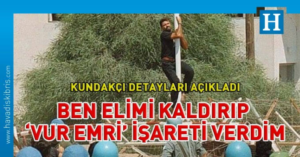
Koundaktsi was unrepentant for the cowardly murder of Solomos Solomou, that fateful August. An international arrest warrant was issued for him by Interpol and he has not traveled abroad since, stressing that he preferred to be known as “the trapped commander” rather than the commander with the flag down.
He himself confessed that before the incidents he had already given orders to the turkish officers and non-commissioned officers gathered at the Deryneia roadblock, that no Greek Cypriot would cross the barbed wire. When Solomos Solomou attempted to take down the flag of occupation from the mast, a wave of his hand from Kundaktsi was enough for him to be shot dead.
His name was recently involved in the case of the murder of the Turkish Cypriot journalist Kutlu Adalı in 1996 in occupied Nicosia, where he was then the head of the Turkish army’s “peacekeeping force” in the occupied territories.
From Berlin to Famagusta
On August 2, 1996, a Pan-European Motorcyclist March had started from the Brandenburg Gate in Berlin with the aim of ending up in the occupied Kyrenia to give the message of the need to end the Turkish occupation. The symbolism of the fall of the Berlin Wall and the need to tear down the barbed wire of the green line in Cyprus, scared the Denktash regime in the occupied territories and Ankara. The Cypriot secret services had information that the Turks would attack and then President Glaukos Cleridis tried to talk the motorcyclists out.
The motorcyclists from various countries started from Berlin, passed through Prague, Budapest, Belgrade, Thessaloniki, Volos and ended up at the port of Piraeus where they boarded ships bound for Cyprus.
The motorcyclists arrived at the Port of Limassol on August 10, 1996, with the aim of attempting to go to Kyrenia the next day, symbolically throwing down Attila’s Wall. They were welcomed by the now deceased, then MEP, Yannos Kranidiotis and the mothers of the missing people from the 1974 invasion.
On August 11, 1996, approximately 8,000 motorcyclists gathered in Nicosia, to attempt to break the green line and follow a peaceful symbolic march to Kyrenia.
The then President of the Cyprus Motorcycle Federation, G. Chatzikostas, was summoned to the presidential palace by President Clerides, who convinced him that the race should be canceled for “supreme reasons of national security”. But it was too late. The people in the streets could not be controlled and so they broke into groups without any guidance and began to attempt to break the green line, finding the Turkish soldiers facing them.
The largest volume of motorcyclists headed to the Deryneia roadblock, just a few meters away from the occupied Famagusta.
Then they killed Tasos
In Deryneia, while the demonstrators were walking unarmed towards Famagusta, they found themselves in front of Turks who had hidden behind bushes. Among them the Turkish Cypriot leader Rauf Denktash who was holding a camera to record a premeditated killing by the “Grey Wolves” who had been recruited as allegedly disgruntled Turkish Cypriots.

They started hitting the Greek Cypriot protesters with bats and stones, after they let them approach the barbed wire that had been spread on the ground.
The 24-year-old Tasos Isaac got stuck in these barbed wire fences, and unable to get up, he was attacked by the nationalists “Grey Wolves”, lynching him with stones, wooden bats and kicks. A month later, his wife gave birth to their daughter Anastasia.
Think beyond Ukraine: Turkey’s drone exports are a threat – Analysis
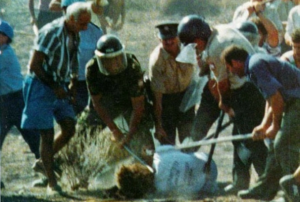
Smoking a cigarette
On August 14, 1996, Tasos Isaac’s funeral was held in Paralimni, which became the occasion for new clashes. After the funeral, a group of motorcyclists decided to go to the scene of the murder in the dead zone to lay some flowers. The attempt of the Cypriot police and the UN forces to stop them was unsuccessful and thus the demonstrators found themselves in the dead zone opposite the Turkish soldiers. The first shots were fired, which instead of dispersing the crowd enraged it. The wounded were taken to the free areas and the rest continued to march towards the Turkish outpost. More shots followed. A young man in black asks for a cigarette and starts running towards the Turkish flagpole. The television camera of Yiannis Koligliatis, who had come from Greece to cover Isaac’s funeral, became recorded a page of history.
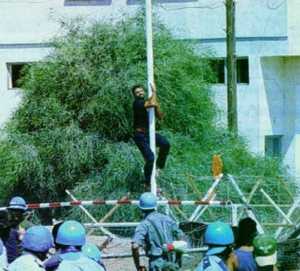
“I’m going now to take down that rag”, says Solomos Solomou, to the man who opened the package giving him the last cigarette. “Where are you going, malaka?! Come back! They will kill you!”. He already knew that, but he had made up his mind. Not a few seconds passed and Solomou climbs the mast. Three shots are heard and Solomon, slides to the ground in blood. Gunshots continue and the crowd falls to the ground. 11 people were injured, including soldiers of the UN peacekeeping force.
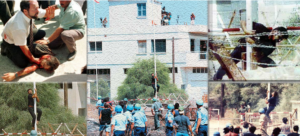
Ask me anything
Explore related questions
